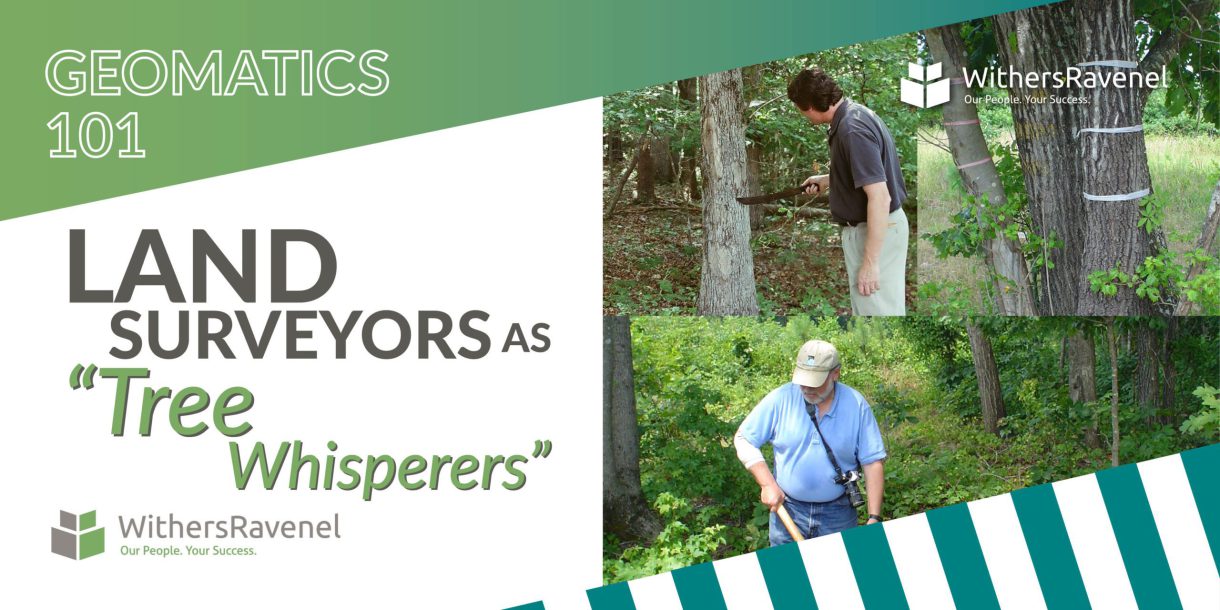
Editor’s Note: Today’s post comes from guest contributor Matthew Crawford. Matthew is WithersRavenel’s Geomatics Director. He is also a Professional Land Surveyor with more than 40 years of experience, and considers himself one of many tree whisperers. Read on to learn more about the subtle science and exact art of recovering exishttps://withersravenel.com/services/geomatics-surveying/ting and lost property boundaries. If you’re interested in putting Matthew’s tree whispering skills to work, reach out to him at (919) 535-5195 or mcrawford@withersravenel.com.
Yesterday’s post alluded to land surveyors as tree whisperers. An explanation of this moniker is no doubt in order.
Since early Egyptian times, landowners have resorted to many methods of marking the boundaries of their properties. These methods have included calling out geographic features such as rivers and roads, setting monuments at property corners, building fences, and marking trees.
The fundamental function of land surveying is the recovery of existing and lost boundary lines. An important part of this work is the interpretation of boundary evidence as provided by trees. Therefore we, as surveyors, read the trees.”
Here are some examples:
Cleared fields
We might interpret a cleared field (below left) as showing evidence of a landowner cutting timber up to the limits of his property. We would be inclined to look in the corner of the field for a property corner marker. In this case, we found a yellow iron pipe marking the corner (below right). We would also look for marked trees along the property lines beside the field.
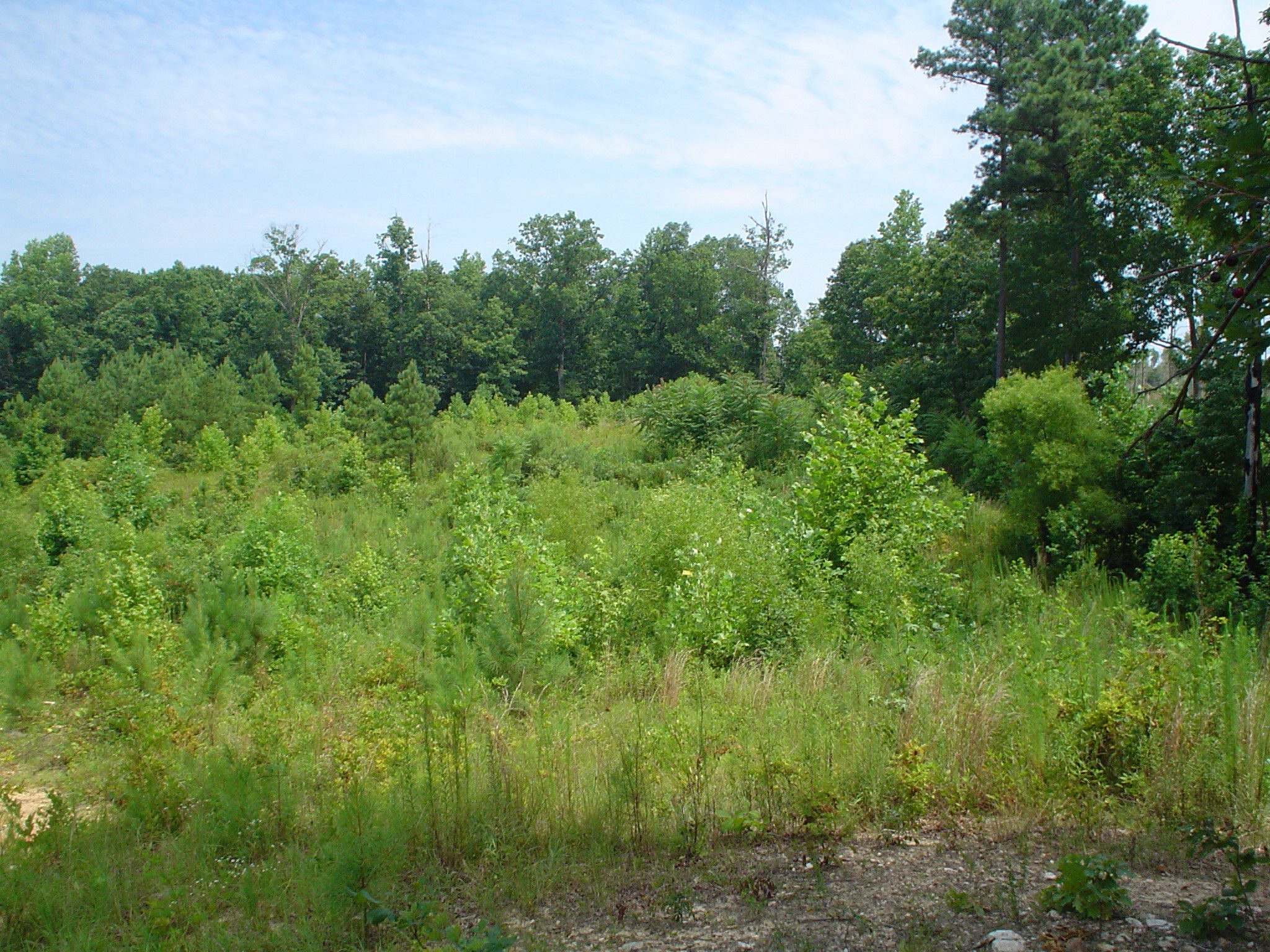
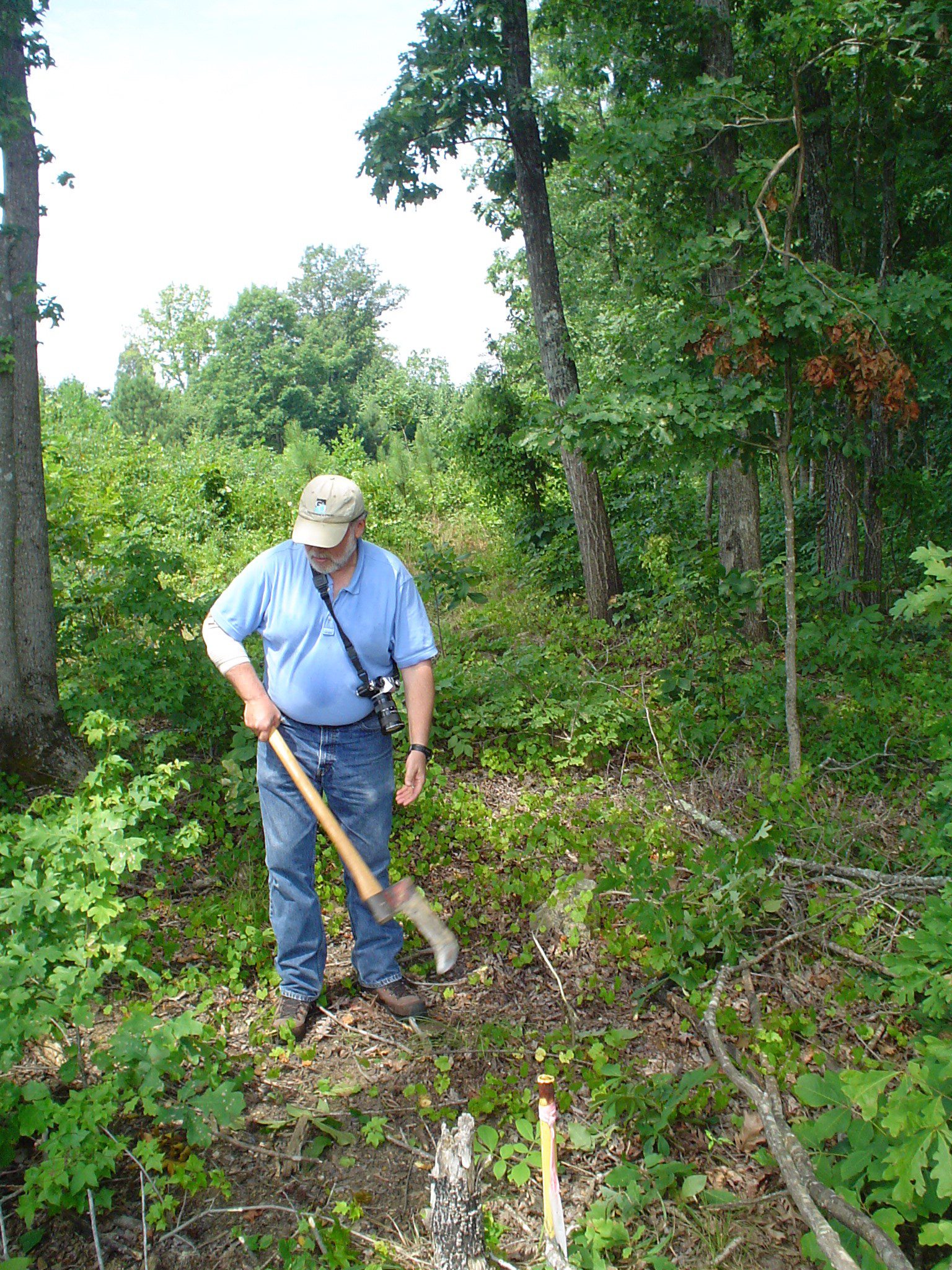
Blazed and chopped trees
Trees that lie on or beside a boundary line may be marked with chops or blazes to indicate their proximity to the line.
A single blaze on two opposite sides of a tree indicates a line tree and that the boundary line runs through the tree. In this case, the blaze (below, seen just over the tip of the machete) is easily confused with other marks (damage caused by logging machinery). A companion blaze found on the opposite side of the tree confirmed this as a line tree and therefore the location of the boundary line.
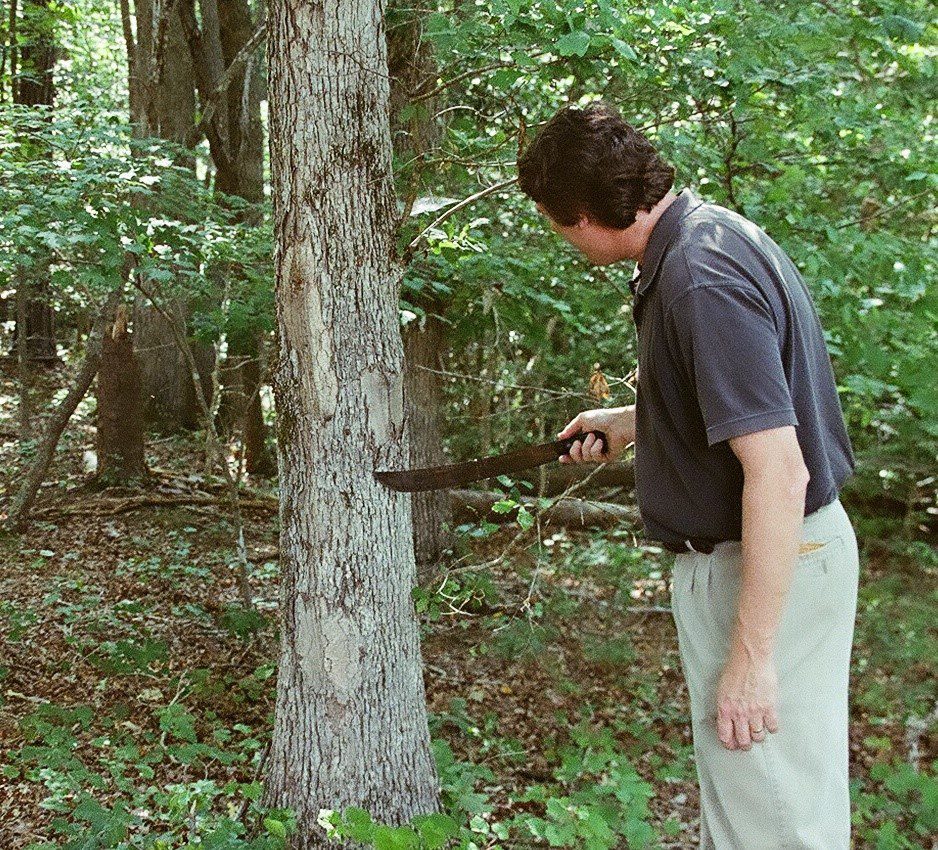
Two chops on only one side of a tree indicate a sideline tree, with the chops pointing to the boundary line running beside the tree. Here the pine bark has grown over the original chops making at least one of them prominent and easy to see. These chops will be visible for decades. A yellow paint stripe applied by the property owner above the marks has faded.
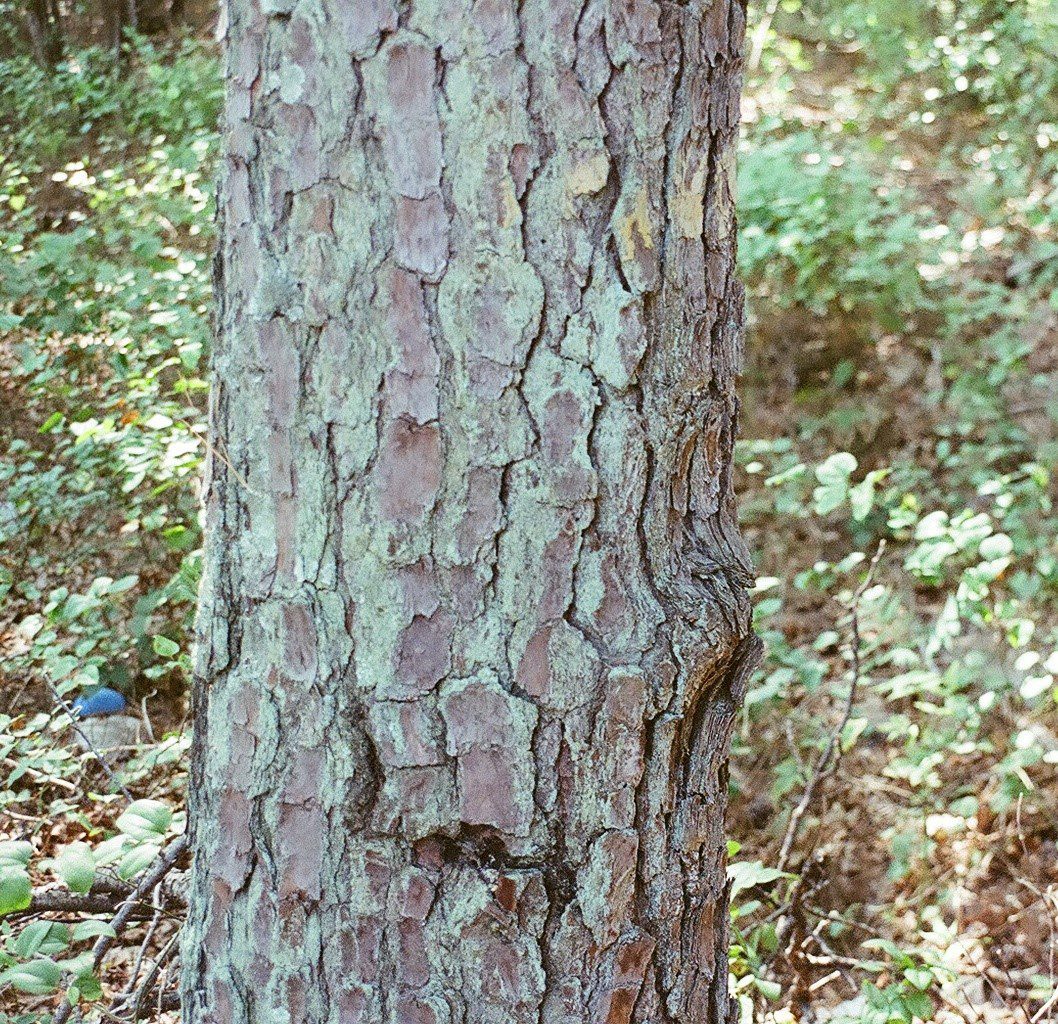
Three chops are made as witness to a property corner. The chops point to the corner monument; here, an iron pipe by my colleague’s left foot. Usually two or three trees are marked to witness a property corner so that if the monument is lost or destroyed, the approximate location of the corner can be recovered.
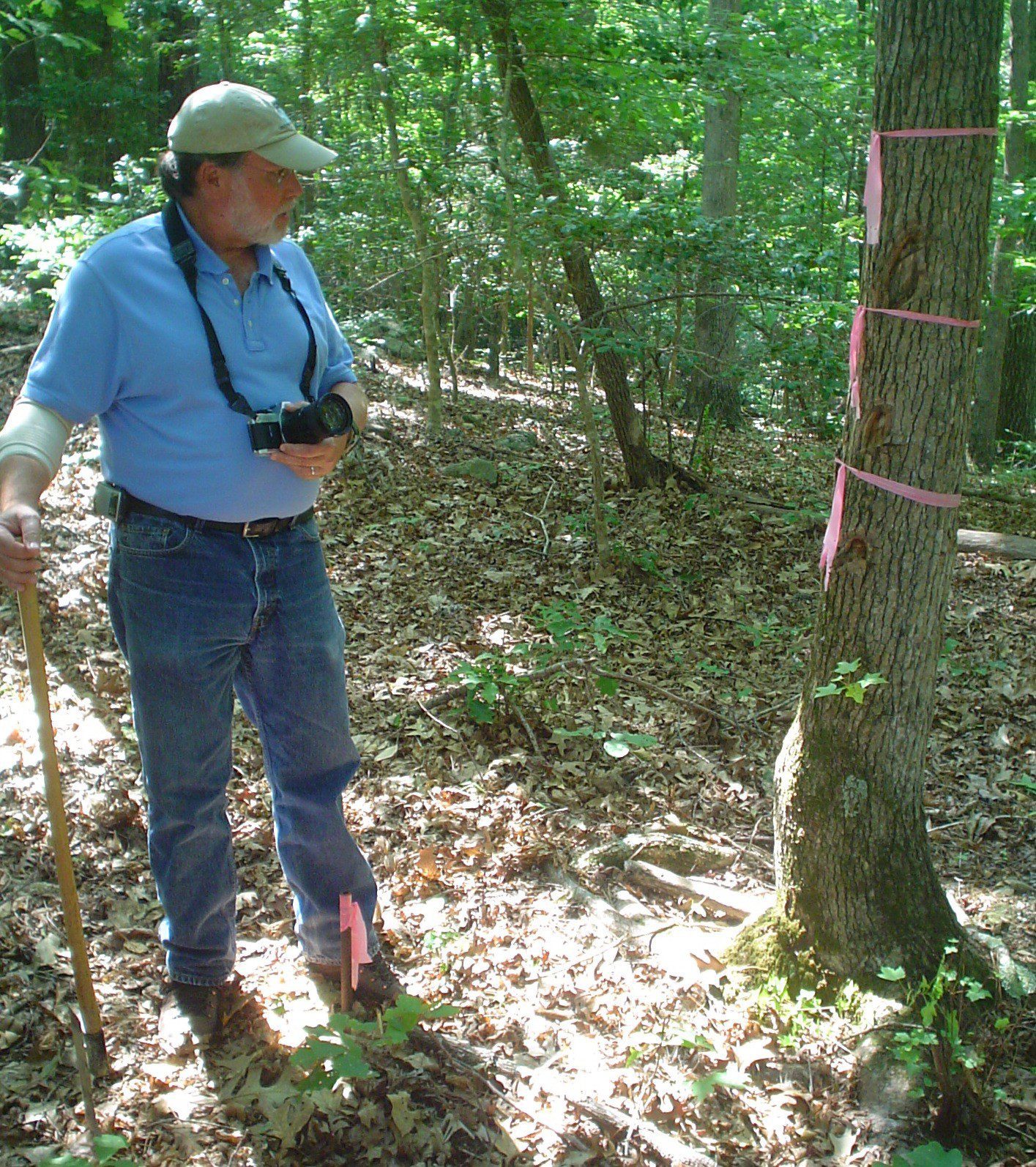
In another example (below), the landowner’s deed called for a rock as the corner monument. We found the rock painted yellow with three chopped witness trees in very close proximity.
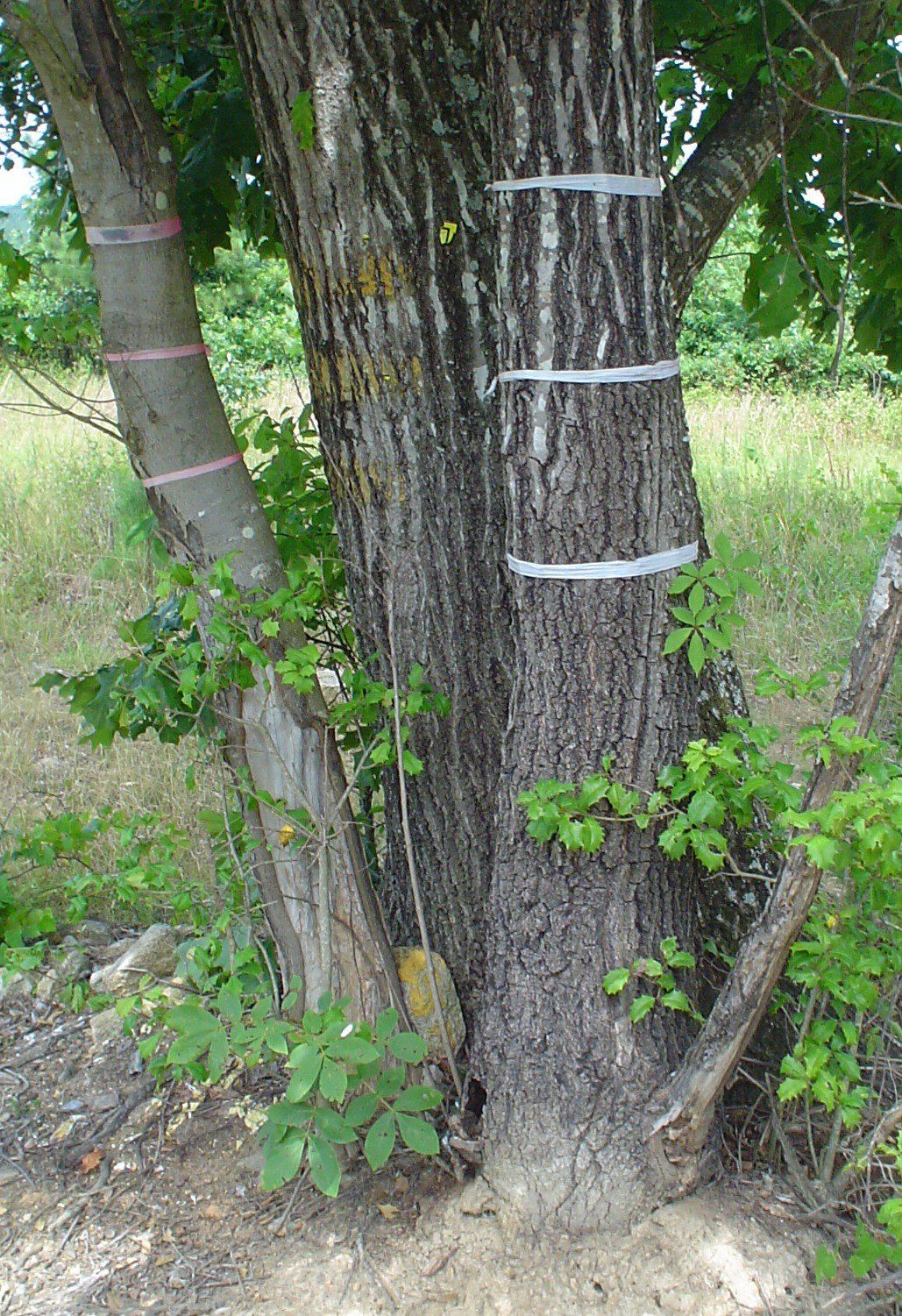
Often, a landowner will paint over the chops and blazes to reinforce the markings, or they will paint their own version of line and sideline markings regardless of the existence of chops and blazes. As such, these painted marks are not always an accurate indication of the boundary location.
The accuracy of tree markings, both painted and chopped, and how well they relate to the actual location of an owner’s boundary line, are the subjects for many hours of discussion. Interpreting the evidence presented by trees for boundary line recovery is only complete when used in conjunction with deeds, maps from previous surveys, landowner testimony, and other physical evidence. In the modern age of high-tech survey electronics, nothing will replace experienced woodsmanship and the skill of tree whisperers.”
A final story on property corners: one might find iron pipes or concrete posts as set by surveyors, or rock piles, fence posts, and axe heads as set by landowners. I once found a tractor seat welded to a truck axle, perhaps suggesting a nice place for a surveyor to take a rest from his whispering activities.
